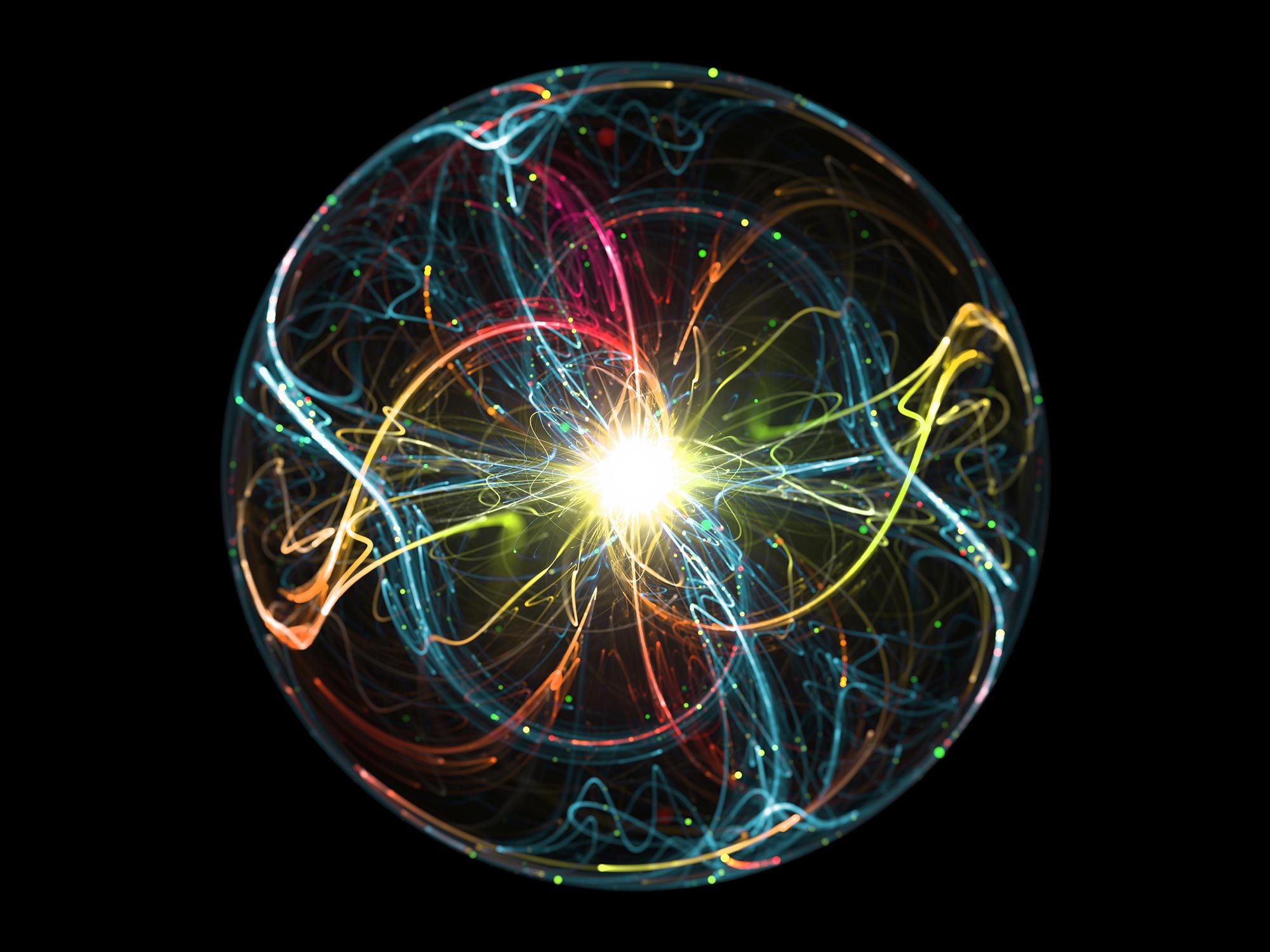
اكتشف الباحثون أن إطارًا نظريًا جديدًا لتوحيد الفيزياء الهرمية والفيزياء غير الهرميتية تم إنشاؤه من خلال الازدواجية بين الفراغات غير الهرمية والمساحات المنحنية.
يتم حل اللغز الفيزيائي عن طريق ازدواجية جديدة.
وفقًا للتفكير التقليدي ، من الضروري تشويه المساحة المسطحة عن طريق الانحناء أو التمدد لإنشاء مساحة منحنية. قامت مجموعة من العلماء في جامعة بوردو طور تقنية جديدة لإنشاء فراغات منحنية قد توفر أيضًا إجابة على لغز فيزياء. طور الفريق طريقة لإنشاء سطح زائدي والعديد من المساحات المنحنية النموذجية الأخرى ، باستخدام طرق غير محكم ، دون التسبب في تشوهات فيزيائية للأنظمة الفيزيائية.
يقول Qi Zhou ، أستاذ الفيزياء وعلم الفلك: “يمكن أن يحدث عملنا ثورة في فهم عامة الناس للمنحنيات والمسافات”.
“لقد أجاب على أسئلة طويلة الأمد في ميكانيكا الكم غير Hermitian عن طريق الحد من الفيزياء غير Hermitian والمسافات المنحنية. واعتبر هذان الموضوعان منفصلين تمامًا. والسلوكيات غير العادية للأنظمة غير Hermitian التي حيرت علماء الفيزياء لعقود من الزمن لن تكون كذلك لغز إذا أدركنا أن الفضاء منحني ، وبعبارة أخرى ، فإن الفراغات اللاخطية والمنحنية مكملة لبعضها البعض ، فهما وجهان لعملة واحدة.

يمكن رؤية نصف مستوي Poincaré في الخلفية يظهر السطح المنحني. تظهر المناظر الطبيعية البيضاء للسطح المنحني كتناظرية للخطوط المستقيمة على سطح مستو. تُظهر الكرات البيضاء التي تتحرك في الاتجاه الصحيح الأصل الهندسي لتأثير الجلد غير المعتاد في الفيزياء غير الهرمية. الائتمان: Chenwei LV و Ren Zhang.
تم نشر نتائج اللجنة في المجلة
One must first comprehend the distinction between Hermitian and non-Hermitian systems in physics in order to comprehend how this discovery works. Zhou explains it using the example of a quantum particle that can “hop” between several locations on a lattice.
If the probability for a quantum particle to hop in the right direction is the same as the probability to hop in the left direction, then the Hamiltonian is Hermitian. If these two probabilities are different, the Hamiltonian is non-Hermitian. This is the reason that Chenwei and Ren Zhang have used arrows with different sizes and thicknesses to denote the hopping probabilities in opposite directions in their plot.
“Typical textbooks of quantum mechanics mainly focus on systems governed by Hamiltonians that are Hermitian,” says Lv.
“A quantum particle moving in a lattice needs to have an equal probability to tunnel along the left and right directions. Whereas Hermitian Hamiltonians are well-established frameworks for studying isolated systems, the couplings with the environment inevitably lead to dissipations in open systems, which may give rise to Hamiltonians that are no longer Hermitian. For instance, the tunneling amplitudes in a lattice are no longer equal in opposite directions, a phenomenon called nonreciprocal tunneling. In such non-Hermitian systems, familiar textbook results no longer apply and some may even look completely opposite to that of Hermitian systems. For instance, eigenstates of non-Hermitian systems are no longer orthogonal, in sharp contrast to what we learned in the first class of an undergraduate quantum mechanics course. These extraordinary behaviors of non-Hermitian systems have been intriguing physicists for decades, but many outstanding questions remain open.”
He further explains that their work provides an unprecedented explanation of fundamental non-Hermitian quantum phenomena. They found that a non-Hermitian Hamiltonian has curved the space where a quantum particle resides. For instance, a quantum particle in a lattice with nonreciprocal tunneling is in fact moving on a curved surface. The ratio of the tunneling amplitudes along one direction to that in the opposite direction controls how large the surface is curved.
In such curved spaces, all the strange non-Hermitian phenomena, some of which may even appear unphysical, immediately become natural. It is the finite curvature that requires orthonormal conditions distinct from their counterparts in flat spaces. As such, eigenstates would not appear orthogonal if we used the theoretical formula derived for flat spaces. It is also the finite curvature that gives rise to the extraordinary non-Hermitian skin effect that all eigenstates concentrate near one edge of the system.
“This research is of fundamental importance and its implications are two-fold,” says Zhang. “On the one hand, it establishes non-Hermiticity as a unique tool to simulate intriguing quantum systems in curved spaces,” he explains. “Most quantum systems available in laboratories are flat and it often requires significant efforts to access quantum systems in curved spaces. Our results show that non-Hermiticity offers experimentalists an extra knob to access and manipulate curved spaces.
An example is that a hyperbolic surface could be created and further be threaded by a magnetic field. This could allow experimentalists to explore the responses of quantum Hall states to finite curvatures, an outstanding question in condensed matter physics. On the other hand, the duality allows experimentalists to use curved spaces to explore non-Hermitian physics. For instance, our results provide experimentalists a new approach to access exceptional points using curved spaces and improve the precision of quantum sensors without resorting to dissipations.”
Now that the team has published their findings, they anticipate it spinning off into multiple directions for further study. Physicists studying curved spaces could implement their apparatuses to address challenging questions in non-Hermitian physics.
Also, physicists working on non-Hermitian systems could tailor dissipations to access non-trivial curved spaces that cannot be easily obtained by conventional means. The Zhou research group will continue to theoretically explore more connections between non-Hermitian physics and curved spaces. They also hope to help bridge the gap between these two physics subjects and bring these two different communities together with future research.
According to the team, Purdue University is uniquely qualified to foster this type of quantum research. Purdue has been growing strong in quantum information science at a fast pace over the past few years. The Purdue Quantum Science and Engineering Institute paired with the Department of Physics and Astronomy, allows the team to collaborate with many colleagues with diverse expertise and foster interdepartmental and collegiate growth on a variety of platforms that exhibit dissipations and nonreciprocal tunneling.
Reference: “Curving the space by non-Hermiticity” by Chenwei Lv, Ren Zhang, Zhengzheng Zhai, and Qi Zhou, 21 April 2022, Nature Communications.
DOI: 10.1038/s41467-022-29774-8

“متعصب التلفزيون. مدمن الويب. مبشر السفر. رجل أعمال متمني. مستكشف هواة. كاتب.”






More Stories
زوج من نفاثات البلازما الضخمة تندلع من ثقب أسود هائل | الثقوب السوداء
الأسمنت المستوحى من عظام الإنسان أصعب بخمس مرات من الخرسانة العادية
تدفع شركة SpaceX صاروخ Falcon 9 إلى حافة الهاوية في هبوط نادر ومميت